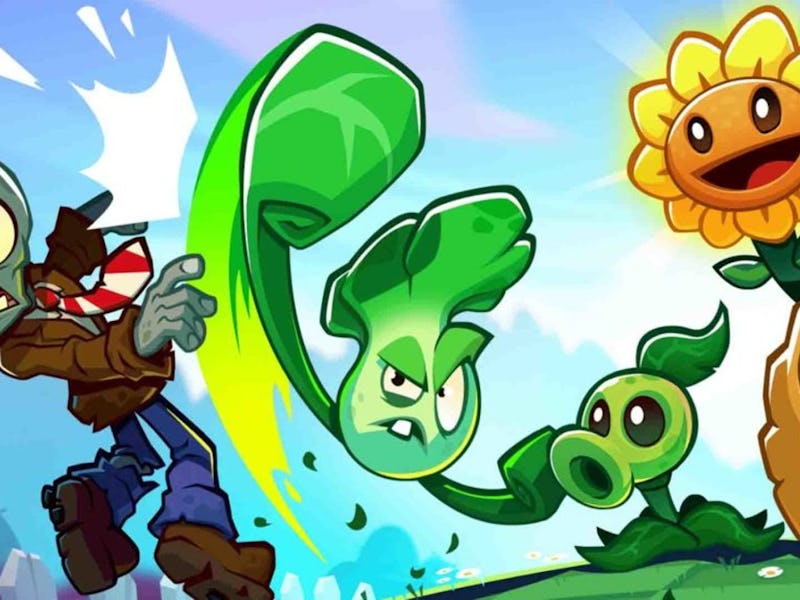15 Years Ago, the Perfect Tower Defense Game Changed Gaming Forever
Strategy for everyone.

Strategy games are typically thought of as dense complicated experiences that you really need to invest time in to enjoy. With the rising popularity of mobile games, that definition has, of course, changed, but there’s one key game to thank for that. Fifteen years ago, Plants vs. Zombies launched and took the world by storm. It would go on to be one of the most influential mobile games of all time, spawning a franchise and making both strategy and tower defense games approachable for anyone and everyone.
PvZ is one of those ideas that already sounds fantastic on paper, but is even more effective in practice. If it wasn’t clear from the title, this is a game entirely about using sentient plants to battle hordes of zombies. That’s it — what you see is what you get. But PvZ manages to take that concept to ridiculous levels, creating an absurdly compelling gameplay loop that has you playing until the early hours of the morning. The other important piece here is that PvZ was a single purchase game, loaded with content that could all be accessed by a single purchase, and not burdened by dozens of microtransactions.
Plants vs. Zombies’ interface is intuitive and easy to use, making its strategy easy to grasp, but with hidden depth.
By definition, PvZ is a “tower defense” game, meaning you construct different towers or defenses to fend off waves of enemies. Where the game really shines, however, is in making these systems as simple and intuitive to use as possible. The best decision PvZ made was to make its levels a board-game-like grid, instead of the usual paths that you see in tower defense games.
Using a limited amount of resources you need to place plants to defend the different lanes in your grid, picking the right types to take down the unique zombie types that are trying to take over your yard. There’s a superb balance between having enough different plant types to keep things interesting, but not too many that it feels overwhelming. The strategy in PvZ is inherently easy to pick up and play, but packs a lot of depth the further you get into the game. The game’s learning curve means that you have sufficient time to learn the ins and outs of its strategy, before really being challenged.
That ease of pick-up and play was what made PvZ such a smash hit, bolstered by its absurdly charming sense of humor and art style. People love zombies, especially zombies in video games, but the cartoony art style of PvZ sets it apart from the shambling rest of the pack. Its art style is bold and colorful, and even one look at a single screenshot is enough to draw your interest.
PvZ had a brilliant twist with nighttime levels that brought new threats and different plant defenses.
A big part of this is the wild designs of the plants you recruited. The now-iconic Pea Shooter looks like you stuck a bazooka in a leafy plant, while the Walnut’s dead-eyed stare is genuinely hilarious. What a guy. On top of each plant having a different mechanical use they all have a unique personality, meaning it’s easy to find favorites that you want to use. This creates an interesting contrast where you want to use your most beloved plants, but have to make the most strategically sound choices. While there is a story in PvZ, it mostly boils down to light-hearted tongue-in-cheek dialogue that keeps things fast and snappy, making sure you’re never too far away from the next level.
PvZ’s blend of accessible strategy and lighthearted humor was bold and brilliant, and it’s easy to see how countless other mobile games have followed suit. The game’s massive success resulted in PopCap Games being purchased by EA, spawning two sequels, spinoffs, merchandise, and even more.
While follow-ups have all added new elements, nothing has quite been able to capture the lightning-in-a-bottle moment that the first game did. Plants vs. Zombies made strategy approachable and easy to understand, but also light and fun. It was the kind of electric original idea that makes video games so special.
Plants vs. Zombies is available on iOS, Android, and PC.